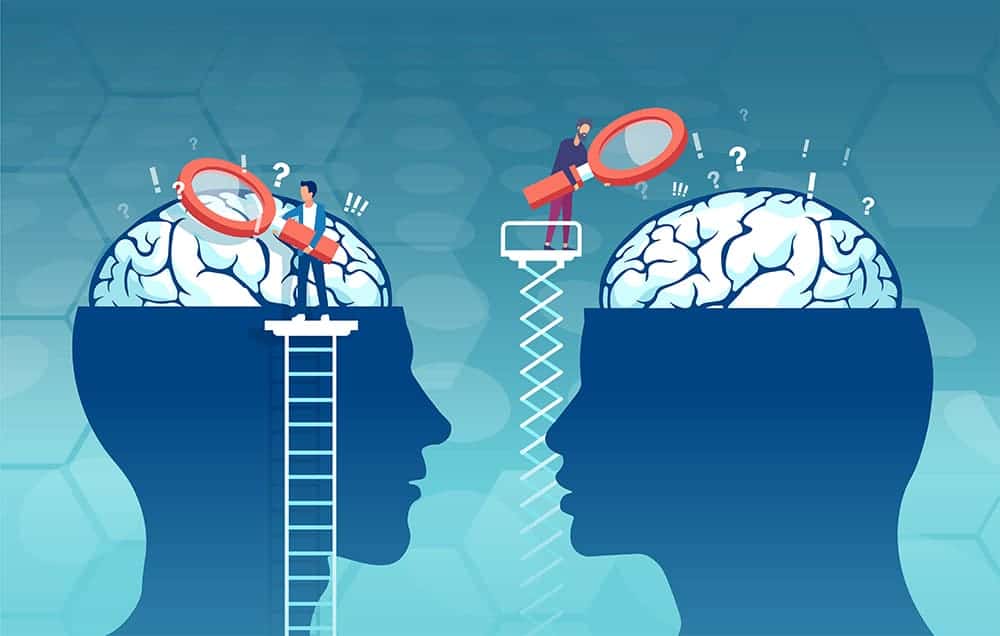Reaching a diagnosis of Attention Deficit with Hyperactivity Disorder (ADHD) is a multi-step process. There is no single test that definitively diagnoses ADHD. To further complicate the diagnostic process, many other issues can have very similar symptoms. Issues that can mimic ADHD include:
- Anxiety
- Different types of learning disabilities
- Depression
- Sleep disorders
- Autism spectrum
If you suspect ADHD, the diagnosis can be made by a mental health care professional or a primary care provider. Patients often discuss the diagnosis with their primary care provider, who will then refer to them the appropriate mental health care provider.
Symptoms of ADHD
There is a range of symptoms associated with ADHD, and they can vary significantly between children and adults. The symptoms broadly span inattentiveness, hyperactivity, and impulsivity. Signs and symptoms include:
- Having a short attention span
- Being easily distracted
- Forgetfulness, losing, or misplacing things
- Inability to stick to the tedious or time-consuming task
- Careless mistakes in schoolwork or other daily tasks
- Inability or struggling to carry out multi-step processes
- Constantly changing tasks or activities
- Fidgeting, inability to remain still
- Disorganization
- The inability to concentrate on tasks
- Excessive physical movement
- Excessive or pressured talking
- Impulsiveness
- Difficulty waiting
- Acting without thinking through potential consequences
Everyone, especially children, will experience some of these signs at some point in their life. However, with ADHD, the symptoms cause lasting repercussions. A child or adult with ADHD may have school problems, underachievement, poor social skills, and difficulty following rules.
Differences in ADHD in Adults
The symptoms of ADHD are more difficult to define and notice in adults. Adults with the disorder have developed coping skills throughout their lives to mask the signs of ADHD, making a diagnosis more challenging.
ADHD presents in childhood, so if it remains untreated, it will progress into adulthood. Comorbidities such as depression and dyslexia may also persist into adulthood. The significant symptoms of inattentiveness, impulsiveness, and hyperactivity will present differently in adults and often tend to be far more subtle.
Testing for ADHD
Healthcare professionals use the guidelines established by the American Psychiatric Association’s Diagnostic and Statistical Manual, 5th edition (DSM-5), to diagnose ADHD in children and adults. It is essential to remember that only a trained healthcare provider can diagnose ADHD.
The criteria for diagnosis include the two main categories of inattention combined with hyperactivity and impulsivity. The same criteria are used in adults but can look different than the symptoms manifest in children.
Inattention:
- Failure to give attention to details at work, on schoolwork, or other activities
- Difficulty staying on tasks
- Difficulty following through on instructions
- Failure to finish chores, workplace duties, or schoolwork
- Trouble organizing activities and tasks
- Avoids or dislikes tasks that require mental effort and focus over long periods of time
- Losing things necessary for tasks (pencils, books, tools, eyeglasses, paperwork, etc.)
- Easily distracted
Hyperactivity and Impulsivity
- Often fidgets, squirms in seat, tapping hands and feet on various surfaces
- Difficulty remaining still in situations where it is expected
- Adults may often feel restless
- Difficulty participating in activities quietly
- Often described as “on the go.”
- Excessive talking
Children and adults will rarely display all the symptoms, but the symptoms must be present before the age of 12. Symptoms must also be present in at least two settings, such as at home and work. For a formal diagnosis, symptoms must also reduce or inhibit functionality at work, school, or social situations. Other mood disorders do not better explain symptoms before a diagnosis of ADHD is given.
Types of ADHD
ADHD is divided into three major types:
- ADHD, combined type: The most common type of ADHD is characterized by inattention and distractability along with inattion, and often, impulsivity.
- ADHD, inattentive, and distractable: ADHD that is characterized predominantly by distractibility and inattention without hyperactivity.
- ADHD, impulsive/hyperactive: This is the least common type of ADHD. The primary characteristics are hyperactive and impulsive behaviors without inattention.
Treatment Options for ADHD
There are a number of treatment options for ADHD. Your or your child’s doctor will make treatment recommendations based on:
- The extent of the symptoms
- Age, medical history, and overall health
- Expectations for the course of treatment
Treatment options include:
- Psychostimulant medications—Medications such as Ritalin, Concerta, and Adderall can help balance chemicals in the brain that make it difficult to maintain attention and control impulses. There are a wide array of medications, and it is essential that you work closely with your doctor to find the right choice for you or your child.
- Behavior management—psychosocial treatments are essential to reduce stress on families. There are behavior management classes available for parents, or your health care provider can help you determine the appropriate system.
- Psychotherapy—Psychotherapy, often in addition to medication, can be invaluable to adults and children with ADHD.



